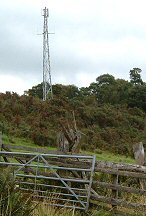


   |
Research principles |
|||
|
Extremely low frequency pulsed electromagnetic radiation does affect living organisms. That means you and me. We are the experiment. |
Do ask yourself why the research money has (a) avoided TETRA and (b) gone to where it has. If you wanted a study into cancer clusters, would you go to a psychology department? If you wanted to know why people got headaches and hot ears using mobile phones, would you go to a psychiatry department? Or would you suspect the Government was looking for a particular kind of answer? Partly as a result of the Stewart Report (2000) into mobile communications, research was commissioned by the Home Office and by the Department of Health and DTI, into various aspects of mobile phone use. Even though TETRA was already in commercial use and causing problems, there has been scant attention to TETRA in any of the government or industry research programmes. There has been a study by Defence Science and Technology Laboratory (DSTL) (ex Porton Down) into the Calcium efflux issue, and the Imperial College monitoring survey of police users of TETRA handsets will continue over perhaps 15 years. So don’t be fooled by Hazel Blears’ (Home Office) statement to MPs of 5 March 2004, that gets relayed around, making reference to the ‘extensive programme of work monitored by world-class independent experts’. None of it will help you if you live near any kind of base stations, let alone TETRA.
It is important that Home Office research such as DSTL should peer reviewed to avoid criticisms of methodology and being set up to ‘allay the fears of the public’, ie lacking independence and being set up to demonstrate a lack of effects. (‘Nescafe studies show coffee is good for your health.’) Professor Olle Johansson, Sweden: In the case of ‘protection from exposure to electromagnetic fields’, it is of paramount importance to act from a prudence avoidance/precautionary principle point of view. Anything else would be highly hazardous! Total transparency of information is the key sentence here, I believe consumers are very tired of always having the complete truth years after a certain catastrophy already has taken place. It shall be noted, that today's recommendation values for mobile telephony, the SAR-value, are just recommendations, and not safety levels. Since scientists observe biological effects at as low as 20 microWatts/kg, is it then really safe to irradiate humans with 2 W/kg (i.e., with 100.000 times stronger radiation!), which is the recommendation level for us? And, furthermore, it is very strange to see, over and over again, that highly relevant scientific information is suppressed or even left out in various official documents, as high up as at the governmental level of society. This is not something that the consumers will gain anything good from, and, still, the official declaration or explanation (from experts and politicians) very often is: ‘If we (=the experts) would let everything out in the open, people would be very scared and they would panic.’ Personally, I have never seen this happen, but instead I have frequently seen great disappointment from citizens who afterwards have realized they have been fooled by their own experts and their own politicians... Another misunderstanding is the use of scientific publications (as the tobacco industry did for many years) as ‘weights’ to balance each other. But you can NEVER balance a report showing a negative health effect with one showing nothing! This is a misunderstanding which, unfortunately, is very often used both by the industrial representatives as well as official authorities. The general audience, naturally, easily is fooled by such an argumentation, but if you are bitten by a deadly poisonous snake, what good does it make for you that there are 100 million harmless snakes around? From FEB-SE, interview. ‘We’re not radios, so frequency effects cannot happen’One of the central arguments by the Home Office (and the so-called O2 ‘experts’) is that there is no known mechanism whereby the human body can pick out particular frequencies of electromagnetic radiation. This is an important oberservation: if, for example, the 17.6Hz or 70Hz pulses are all muddled up with the 400MHz carrier wave, how can we tell it is there, let alone be affected by it? Surely we are not like some sophisticated receiver that can ‘tune in’ to specific frequencies? We can be terribly good at saying that what we do not know, does not exist. Before we dismiss the body’s recognition of subtle frequencies (and so extremely separated from the carrier wave), we should try asking by what mechanism you can pick out a single violin from the whole orchestra. We clearly can. Just as surely as you can pick out a distant conversation in a crowded, noisy room, if the voice is familiar or the content significant to you. This ‘sense of meaning’ applies to subtle EM frequencies as surely as to mental processes whereby sounds become significant.
It is also important to note that while there is research into hypersensitivity to mobile phones, there has been nothing currently looking at mobile phone base stations, still less on TETRA masts! (See the MTHR research programme, which until a November 2004 announcement had run out of funding, and which did not examine TETRA in any way.)
|
 TETRA at Lechkin Farm, Comrie. |
|
Home | |||